Brand bidding strategy is about deciding when and how to bid on your own brand terms in paid search to protect visibility, defend revenue, and improve performance. It goes beyond simply turning on a “brand campaign” and treats brand terms as a strategic lever within your overall digital marketing mix.
In 2025, this matters more than ever because:
- SERPs show multiple top ad slots and rich elements above organic results
- Competitors, marketplaces, and even your own automated campaigns can sit above your organic brand listing
- Users often act on what they see first, especially on mobile
In this guide, you’ll learn:
- What brand bidding is and why it has become essential
- How to evaluate its incremental value and competitive necessity
- How to build a conditional framework (when to bid vs. when not to)
- How to structure and optimize campaigns using modern automation and AI
Understanding Brand Bidding: Foundation & Core Concepts
What is Brand Bidding?
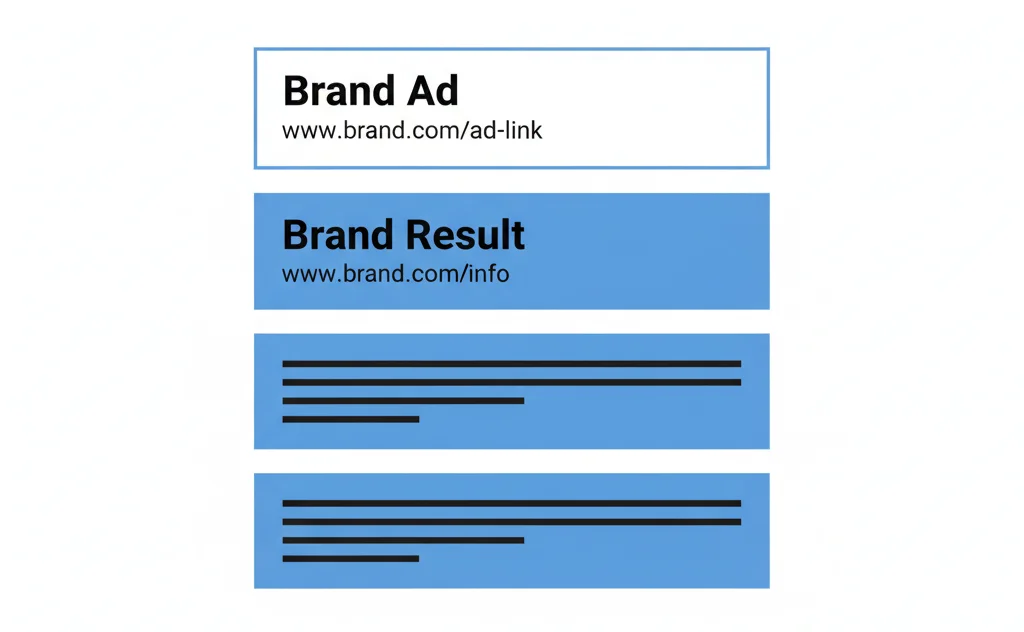
Brand bidding means bidding on keywords that contain your own brand or branded products so your ads appear when people search specifically for you.
Typical brand keywords include:
- Your company or product name (e.g., “Acme Software”)
- Brand + product/service (e.g., “Acme CRM pricing”, “Acme support”)
- Trademarked product names that function like brands
Key distinctions:
- Brand bidding vs. competitor brand bidding
- Brand bidding: you bid on your own brand terms to capture demand you created
- Competitor brand bidding: you bid on competitors’ brand terms to intercept their demand
- Brand bidding vs. brand awareness campaigns
- Brand bidding captures explicit intent on search (bottom/mid funnel)
- Awareness campaigns focus on reach and impressions (top of funnel) via display, video, etc.
Brand keywords often deliver:
- Very high query–ad–page relevance
- Strong intent (user already knows the brand)
- Higher CTR and better efficiency than generic terms
Over time, as PPC formats, ad assets and auctions have evolved, brand bidding has shifted from “optional” to a central strategy for many performance programs.
Why Brand Bidding Has Become Essential in 2025
Today’s SERPs are dense and dynamic. Even if you rank number one organically for your brand, users may see multiple other elements first.
Key SERP changes that affect brand bidding:
- Up to four text ads can display above organic listings
- Ads can use long headlines, descriptions, and multiple assets
- Local packs, shopping units, and other features can push organic results down
- On mobile, a single screen can be entirely filled with paid and rich elements
As a result:
- A competitor or marketplace can appear above your organic result on your own name
- Users in a hurry may click the first relevant element, not scroll to find you
- Relying only on organic can mean loss of high‑intent traffic
Brand queries are also:
- Strong signals of familiarity (user already knows you)
- Often late‑stage in the buying journey
- Typically higher converting than non‑brand queries
All this makes brand bidding less about “paying for your own name” and more about controlling and optimizing high‑intent brand demand on a crowded SERP.
The Pro and Con Debate: Setting the Record Straight
There’s a long‑running debate around brand bidding. It helps to lay out the main arguments on each side and then move to a balanced, strategic view.
Pro–brand bidding arguments
Marketers in favor of brand bidding usually highlight:
- Incremental traffic and revenue that would not be fully replaced by organic
- Protection against competitors capturing clicks on your brand terms
- High Quality Scores and relatively low CPCs versus generic search
- Strong ROAS and CPA thanks to high intent and relevance
The core claim: brand bidding improves both control and performance on traffic you care about most.
Anti–brand bidding arguments
Skeptics tend to focus on:
- Selection bias: users who search for your brand might convert anyway via organic
- Cannibalization: paid clicks may replace rather than add to organic clicks
- Cost: paying for your own name can feel like a “tax,” especially as CPCs rise
- Philosophy: if you already rank first organically, paid may appear unnecessary
The core concern: brand ads may look great in reports but not add true incremental value.
A balanced perspective
A pragmatic view treats brand bidding as a conditional business decision, not doctrine:
- In some markets, with active competition and high brand volume, not bidding is risky
- In others, with no competition and strong organic dominance, brand bidding can be light or even unnecessary
- The decision should be based on data: SERP analysis, incremental tests, and economics
The key is to ask: under what conditions is brand bidding profitable and protective for us? Then design a framework around those conditions.
Strategic Analysis: Setting Objectives & Competitive Landscape
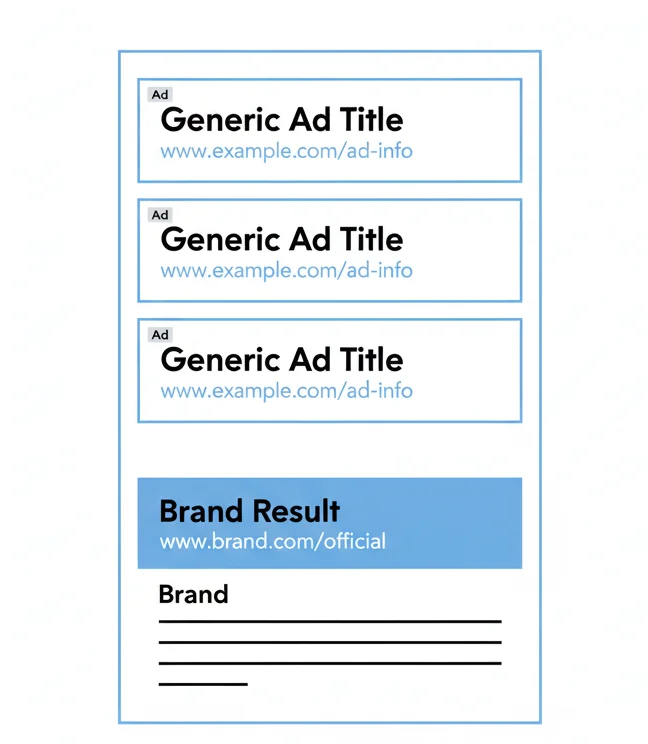
Define Clear Brand Bidding Objectives
Before deciding “how much” to invest, define “why” you’re bidding on brand.
Typical business goals include:
- Net profit maximization
- Lead generation volume and lead quality
- Customer lifetime value (CLV) growth
- SERP domination and brand presence control
- Market defense against aggressive competitors
- Support for new product launches or big campaigns
- PR crisis mitigation and narrative control
Translate these into measurable targets, for example:
- Acceptable CPA range for brand leads or sales
- Minimum ROAS threshold for branded campaigns
- Target share of branded search going to owned properties
- Desired impression share on brand terms
A simple conceptual check for profitability is:
- Does (branded paid revenue – media spend) + organic revenue exceed organic‑only revenue on brand searches?
Use your own historical data to set realistic benchmarks for:
- Conversion rate on brand traffic
- Expected CPA and ROAS
- Differences in performance between brand and non‑brand campaigns
Conducting Comprehensive Competitive (SERP) Analysis
Next, understand your competitive reality on the SERP.
How to identify who is bidding on your brand:
- Review Auction Insights for branded campaigns (if you’re already bidding)
- Use competitive tools (e.g., Semrush, SpyFu) to see advertisers on your brand terms
- Run manual branded searches across devices, locations, and times (as spot‑checks)
Be aware of limitations:
- Manual checks can miss advertisers limited by budget, schedule, or geography
- Third‑party tools provide sampled data and directional trends, not a complete picture
To assess threat level and intensity, look at:
- How often competitors appear on your brand queries
- Their average positions relative to you
- How compelling their ad copy, offers, and assets are
- Whether affiliates or resellers are bidding on your brand and outranking you
Evaluate your organic performance as well:
- Current ranking positions for core brand queries
- Organic CTR on branded terms
- Share of branded traffic already going to your site
- Comparison of organic vs. paid branded sessions and conversions
This combined view shows whether there is meaningful risk in not running brand ads.
Evaluating External and Internal Brand Threats
External threats include:
- Direct competitors bidding on your brand
- Marketplaces or comparison sites capturing brand searches
- Affiliates or partners following aggressive bidding strategies
- Potential misuse of your brand name in ads by low‑quality actors
Internal factors to assess:
- Brand recognition and search volume in each market
- Market penetration and competitive maturity
- Geographic distribution of brand queries
- Seasonal patterns tied to campaigns, holidays, or buying cycles
If offline and upper‑funnel campaigns (TV, OOH, social) are driving spikes in brand searches, the upside—and risk—around those queries increases. In peak periods, not defending your brand terms can mean more leakage to competitors.
Also Read: What Is Personal Branding? And Why It’s So Important?
Measuring Value: ROI Analysis & Performance Metrics
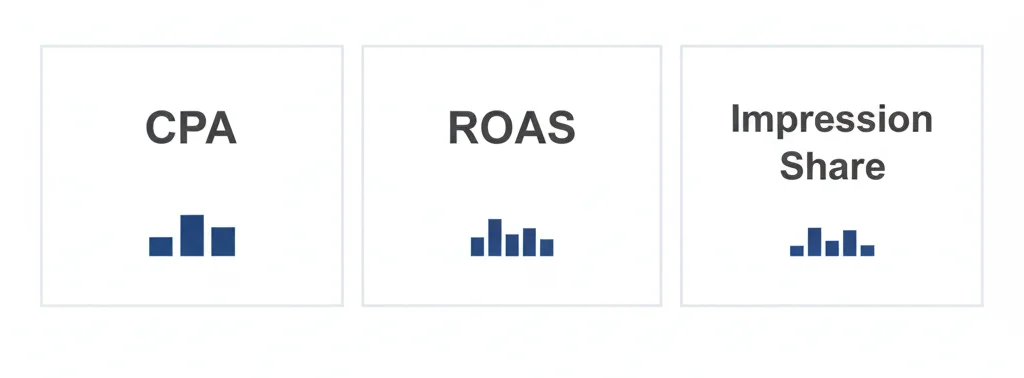
Identifying the True Value of Brand Ads
To see real value, compare behavior, not just raw numbers.
Look at differences between paid brand and organic brand traffic in analytics, for example:
- Conversion rate
- Revenue or lead value per session
- Bounce rate and depth of visit
- Average order value or lead quality
If brand ads send users to dedicated, high‑intent landing pages while organic traffic lands on a general homepage, paid sessions may:
- Convert at a higher rate
- Produce more value per visit
- Support clearer paths for new vs. returning users
Evaluate channel performance with:
- Source/medium and campaign reports in analytics
- “Paid & organic” views (where available) to see overlap on the same queries
- Controlled tests (carefully planned pause tests) to approximate incremental impact
Also consider:
- Ratios of new vs. returning customers from brand ads
- Cross‑device and assisted conversion paths where brand is one of several touchpoints
These analyses shift the question from “are brand ads cheap?” to “are they adding net value?”
Essential KPIs for Brand Bidding Success
Core KPIs to monitor include:
- Click‑Through Rate (CTR) on brand keywords
- Cost Per Acquisition (CPA) for brand conversions
- Return on Ad Spend (ROAS) for brand campaigns
- Impression Share / Top‑of‑Page Rate on brand queries
- Conversion Rate and volume
- Quality Score on brand terms
Common patterns:
- Brand CTR often far exceeds generic keyword CTR
- Brand CPAs tend to be lower than non‑brand, thanks to higher intent
- Quality Scores on brand are usually high when campaigns are well structured
Advanced indicators:
- Customer Lifetime Value (CLV) tied to brand‑originating customers
- Share of brand search traffic going to owned vs. partner domains
- Assisted conversions, showing how brand ads feature in multi‑touch journeys
- Trends in brand search volume over time
Where possible, compare:
- Performance with vs. without brand campaigns (using structured tests)
- CPC and CPA differentials between brand and non‑brand search
This gives you a grounded sense of brand bidding’s contribution.
Building Your Strategic Framework: Decision Time
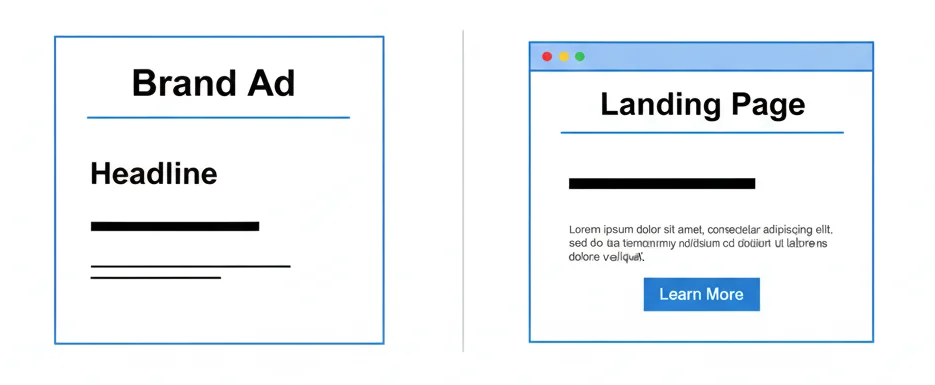
Creating a Data-Driven Strategic Framework
Rather than a blanket “always on” or “never bid,” build explicit rules for when to bid and how aggressively.
Define conditions such as:
- Bid aggressively when
- Direct competitors are consistently above or near you on brand terms
- Organic coverage is imperfect or unstable
- Brand search volume is high and profitable
- Major campaigns or product launches are running
- Bid conservatively or pause when
- There is no visible competitor or partner activity on your brand
- Organic dominates and delivers reliably
- Budget constraints demand focus on higher‑leverage areas
Example strategic models:
- Volume: fully fund brand terms as long as they meet minimum ROAS/CPA
- Efficiency: let budget flex with unit economics; tighten if ROAS drops
- Conservation: limit or avoid brand bidding when there is no real threat
- Limited defense: allocate a set percentage (e.g., 10–15%) of search spend to defensive brand coverage
Attach each model to:
- Clear metrics and thresholds (ROAS, CPA, impression share)
- Budget ranges and caps
- Review cadence (e.g., monthly)
Decision Matrix: To Bid or Not to Bid
Create a simple matrix or checklist to guide decisions by market, brand, or segment.
Factors favoring brand bidding:
- Active competitor or marketplace presence on your brand
- High proportion of revenue tied to branded search
- Strong incremental return shown in tests or analytics
- Periods of elevated demand (campaigns, seasonality)
Factors against heavy brand bidding:
- No competitor or partner activity on core brand terms
- Strong organic dominance with high CTR and conversions
- Severe budget limitations and greater opportunities in non‑brand/prospecting
- Very low brand search volume where returns do not justify complexity
Business maturity, margin structure, and appetite for risk all influence how you set the final rules.
Implementation: Two Strategic Paths
Option 1: Exclude Brand Bidding
If you decide not to bid on brand, manage it actively.
Practical steps:
- Add your brand terms and common variations as negative keywords in non‑brand campaigns
- Include misspellings and alternative formats to prevent accidental matching
- Regularly check search term reports for unexpected brand matches
Ongoing monitoring:
- Watch the SERP for new competitors or resellers on your brand terms
- Track organic performance and brand search trends over time
- Be ready to switch to a defensive or full brand bidding model if conditions change
This avoids “accidental” brand bidding while keeping you informed and flexible.
Option 2: Bid on Brand
If you choose to bid on brand, structure is everything.
Best practices for campaign structure:
- Create dedicated brand campaigns, separate from non‑brand
- Use distinct ad groups for:
- Exact‑match core brand terms
- Brand + product/service variations
- Common misspellings and alternate spellings
- For multi‑location or multi‑market brands, consider location‑specific brand campaigns
Keyword and match‑type strategy:
- Prioritize exact match for your most important brand terms
- Use phrase/broad match more cautiously to catch useful variations
- Maintain negative keyword lists to:
- Block competitor names (if desired)
- Exclude job‑seeker terms (“careers”, “jobs”)
- Filter unrelated intent or locations
This structure lets you see clearly how each brand segment performs and adjust bids and budgets precisely.
Optimization: Best Practices & Advanced Techniques
Ad Copy and Creative Optimization
Even for users already searching your name, ad quality matters.
Guidelines:
- Analyze competitor ad copy on your brand terms
- Emphasize a clear, differentiated value proposition
- Address common reasons people search your brand (pricing, features, support, reviews)
Use testing:
- A/B test headlines and descriptions
- Try different calls‑to‑action (e.g., “Get a Demo”, “Start Free Trial”, “Book a Consultation”)
- Test benefit‑focused vs. feature‑focused messaging
Leverage ad extensions/assets:
- Sitelinks to pricing, key product pages, case studies, support
- Callouts and structured snippets for key benefits or features
- Image or logo assets to reinforce brand presence
- Call and location assets for service or local‑oriented businesses
- Promotion or price assets for offers and product ranges
This combination helps you dominate visual and informational space on the brand SERP.
Landing Page Optimization
Send branded searchers to pages that best match their intent.
Options include:
- A dedicated brand or “overview” landing page for new visitors
- Product or pricing pages for commercial‑intent queries
- Support or documentation pages for help‑oriented searches
Core principles:
- Strong message match between ad and page
- Clear, prominent calls‑to‑action
- Trust signals (testimonials, reviews, logos, guarantees)
- Fast, mobile‑friendly design
- Simple, friction‑reduced forms where applicable
Iterate using conversion rate optimization (CRO) methods:
- Test alternative layouts and CTAs
- Short vs. long forms
- Different social proof placements
Because branded visitors are high intent, improvements here often have outsized impact.
Quality Score Optimization
Quality Score on brand terms should normally be high; if it isn’t, fix fundamentals.
Focus on:
- Tight alignment between keywords, ad groups, and ad text
- High relevance of landing pages to branded queries
- Clean, fast, mobile‑optimized experiences
If you see low or falling Quality Scores on brand:
- Re‑group keywords for tighter themes
- Refresh ad copy to better match queries
- Improve landing page content and technical performance
Better Quality Scores typically translate into lower CPCs and more efficient coverage.
Advanced Bidding Techniques for 2025
Take advantage of modern bid strategies, but set clear guardrails.
Common automated strategies for brand:
- Target CPA
- Target ROAS
- Maximize Conversions
- Maximize Conversion Value
Good practices:
- Start with conservative targets and adjust gradually
- Monitor how automation behaves on low‑volume vs. high‑volume brand sets
- Keep brand in its own campaign so its strong performance doesn’t distort non‑brand targeting
Use refinements such as:
- Device bid adjustments (if you’re using manual / enhanced CPC):
- Increase or reduce bids by device depending on performance
- Dayparting:
- Increase bids during peak conversion hours
- Reduce bids or limit spend when users rarely convert
- Audience and location adjustments:
- Boost bids for high‑value audiences (e.g., in‑market, past purchasers)
- Emphasize strong regions and de‑emphasize low‑value ones
Automation plus human constraints usually delivers the best balance.
Performance Max and AI Integration
AI‑driven campaign types and tools are now central to many PPC programs.
Considerations for Performance Max and similar:
- They can capture brand traffic unless you structure your account and exclusions carefully
- Creating brand‑specific asset groups allows more relevant messaging and control
- Regularly review reporting to understand how much of Performance Max volume is branded
External and platform AI tools can help with:
- Automatic bid adjustments based on behavior and patterns
- Predictive modeling of when to increase or decrease bids
- Detecting suspicious or unauthorized brand bidding activity
The goal is to let AI optimize within rules you define, rather than handing it unchecked control over brand queries.
Addressing Common Challenges & Cost Management
Fixing High CPCs for Brand Keywords
If your brand CPCs are higher than expected, review:
- Match types
- Are broad or phrase matches pulling in irrelevant traffic?
- Are competitor or unrelated modifiers inflating auctions?
- Negative keywords
- Are there gaps around job‑seeker, information‑only, or irrelevant terms?
- Do you exclude competitor names you don’t want to chase?
- Quality Score factors
- Are landing pages generic or misaligned with queries?
- Is ad copy too vague or not clearly branded?
Tightening match types, adding negatives, and improving relevance are the primary levers to bring CPCs back in line.
Managing Competitive Pressure and Bidding Wars
To avoid destructive bidding wars:
- Monitor Auction Insights for big shifts in competitor impression share and position
- Set internal maximum CPC or bid limits for brand
- Focus on Quality Score, relevance, and user experience rather than “always being number one at any cost”
- Where appropriate, address problematic competitor or partner behavior through policy, legal, or program rules rather than just higher bids
The aim is sustainable, profitable coverage—not winning every auction regardless of cost.
Affiliate Management and Brand Bidding
In affiliate and partner programs, unmanaged brand bidding can:
- Cannibalize direct brand campaigns
- Drive up CPCs for everyone
- Create inconsistent or conflicting brand messaging
Mitigation strategies:
- Define explicit policies on:
- Whether affiliates can bid on brand terms at all
- Which keywords are reserved exclusively for the brand
- How affiliates may use brand names in ad copy
- Implement governance:
- Monitor search results for partner activity on brand terms
- Require disclosure or specific messaging if allowed
- Enforce consequences for violations
Trademark protections and platform policies can help you limit abusive use of brand names in ads, but ongoing monitoring is still necessary.
Measuring Success & ROI Optimization
Setting Baseline Conversion Goals
Use your own data to set realistic goals for brand campaigns.
Consider:
- Historic conversion rates on branded search
- Average order value or lead value
- Margins by product line
Define:
- Target CPA and maximum acceptable CPA
- Target ROAS or minimum ROAS thresholds
- Specific volume targets for key branded actions (sales, demos, sign‑ups)
These baselines guide your bid and budget decisions.
ROI Maximization Techniques
To systematically improve brand campaign ROI:
- Continuously refine targeting and bidding:
- Adjust device bids, locations, and audiences
- Split out high‑value brand segments into their own ad groups or campaigns
- Maintain a testing program:
- Regular ad copy experiments
- Landing page variants
- Comparing bidding strategies (manual vs. automated)
Use attribution insights to see:
- How often brand ads assist conversions that start on other channels
- Whether brand performance shifts when awareness campaigns run
- How first‑click vs. last‑click views change the perceived value of brand
All of this helps avoid undervaluing or overvaluing brand campaigns.
Competitive Benchmarking and Monitoring
Make brand bidding review part of your regular cadence.
Suggested rhythm:
- Weekly
- Check search term reports and key KPIs
- Scan SERPs for obvious competitor changes
- Monthly
- Review Auction Insights trends
- Assess ROI and efficiency vs. targets
- Evaluate ad and landing page tests
- Quarterly
- Re‑assess strategic framework and decision matrix
- Look at seasonality and bigger shifts in brand search volume
Benchmarking against competitors and your own historical baselines keeps strategy grounded.
Continuous Optimization Cycles
Think in cycles, not one‑off optimizations.
A typical cycle might include:
- Identify area of focus (e.g., ad copy, LP, bidding)
- Formulate hypothesis and design test
- Run test for an appropriate period and volume
- Analyze outcomes and implement winners
- Document learnings and define next test
Over time, this compounds into significantly stronger brand performance and sharper insight into your audience.
Avoiding Common Mistakes & Pitfalls
Strategic Errors
Common high‑level mistakes include:
- Treating brand bidding as ideology instead of a data‑driven decision
- Ignoring how brand ads interact with organic search
- Not measuring incremental value vs. just looking at campaign‑level ROAS
- Failing to coordinate with affiliates or channel partners
All of these can lead to either over‑spending or under‑protecting your brand.
Campaign Structure Mistakes
Structural pitfalls:
- Mixing brand and non‑brand keywords in the same campaign
- Letting non‑brand campaigns accidentally capture brand queries
- Using the same ad and landing page for all brand intents
These issues blur performance data and weaken optimization. Segmentation and alignment solve most of them.
Budget and Cost Control Issues
Watch out for:
- One shared budget where strong brand performance masks weak non‑brand results
- No clear caps or controls on brand CPCs in competitive auctions
- Overspending on brand when organic already does most of the work efficiently
Dedicated budgets, regular reviews, and clear thresholds keep brand investment aligned with true return.
Frequently Asked Questions (FAQ)
1. Should every business bid on brand keywords?
No. It depends on competition, organic strength, budget, and profitability. Treat it as a testable decision, not an automatic rule.
2. How much should I spend on brand bidding?
Spend should be guided by CPA/ROAS targets, margin structure, and the size and value of branded search demand in your account.
3. How do I know if brand bidding is working?
Look at total branded search conversions and revenue, compare periods or tests with/without brand ads, and track incremental lift where possible.
4. What’s the difference between brand and competitor brand bidding?
Brand bidding targets your own name; competitor brand bidding targets your rivals’ names and raises separate strategic and ethical questions.
5. How do I manage affiliate brand bidding?
Set clear policies, monitor activity, and enforce rules around which brand terms affiliates can bid on and how they can use your brand in ads.
6. What’s a good CPC for brand keywords?
“Good” is relative to your margins and target CPA, but brand CPCs are typically lower than comparable non‑brand CPCs in the same account.
7. How do I prevent bidding wars?
Use bid caps, monitor Auction Insights, avoid reactive bidding, and address problematic behavior through governance rather than only higher bids.
8. Should I use automated bidding for brand campaigns?
Often yes, but with realistic targets and active monitoring. Automation should serve your goals, not override them.
9. How often should I update my brand bidding strategy?
At least quarterly for strategic updates, with weekly and monthly checks on performance, search terms, and competitor behavior.
10. What’s the ROI of brand bidding vs. organic search?
It varies by business; only your data and tests can show the incremental value brand ads add on top of organic.
Conclusion
Strategic brand bidding in 2025 is about owning and optimizing high‑intent demand for your name in an increasingly complex and competitive SERP. By defining clear objectives, analyzing your landscape, building a conditional framework, and optimizing campaigns with discipline and modern tools, you can use brand bidding to defend your market share and improve overall efficiency.
Treat brand bidding as a flexible, data‑driven component of your PPC mix. Revisit your assumptions regularly, test rigorously, and let real outcomes guide how, when, and how much you bid on your own brand.

Passionate about blogging and focused on elevating brand visibility through strategic SEO and digital marketing. Always tuned in to the latest trends, I’m dedicated to maximizing engagement and delivering measurable ROI in the dynamic world of digital marketing. Let’s connect and unlock new opportunities together!
